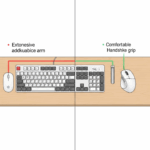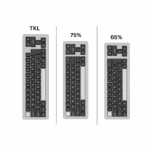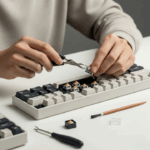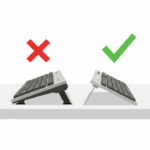Introduction
You have the perfect ergonomic chair, your monitor is at the ideal height, and you’ve invested in a high-quality keyboard. You’ve followed every step of a proper ergonomic workspace setup. So why do your hands and wrists still feel stiff, tired, or even painful after a long day of work? The surprising answer for many is that even the best equipment can’t protect you from poor technique. Ergonomics isn’t just about your gear; it’s about how you use your body.
Meet Lucas, a university student who has his desk dialed in perfectly. He’s even explored different ergonomic keyboard types to find his perfect match. Yet, the long hours spent writing essays and coding projects still leave him with a familiar ache. Lucas’s problem isn’t his hardware; it’s his “software”—the habits and movements he uses to type. This guide is the “software update” for your hands and wrists. We’ll identify common typing mistakes and provide a simple routine of healthy habits and exercises to ensure your comfort and long-term wellness at the keyboard.
Are You Making These Common Typing Mistakes?
The first step to improvement is identifying bad habits. Many of us develop these without realizing it, and they are a primary source of repetitive strain.
- Wrist Anchoring: Do you rest the heels of your palms or your wrists on a wrist rest or the hard edge of your desk while typing? This common habit is detrimental. It compresses the tissues on the underside of your wrist, including the sensitive carpal tunnel area, putting pressure on nerves and restricting blood flow.
- Forceful Typing (“Bottoming Out”): Many people strike each key with far more force than necessary, slamming it down to the bottom of its travel. On a mechanical keyboard, the keypress is registered midway down. Hitting it with excessive force sends a small jolt of impact shock up through your fingers and tendons with every single keystroke.
- Finger Gymnastics: Stretching a single finger (usually the pinky) to reach distant keys like
BackspaceorShiftwhile keeping the rest of your hand anchored is a recipe for strain. Your fingers are not designed for that kind of independent, high-strain movement.
The Pillars of Healthy Typing Technique
Replacing bad habits with good ones takes conscious effort, but the payoff is enormous. Focus on these three pillars.
- Float Your Wrists: This is the golden rule. Your hands should hover over the keyboard, and your wrists should be kept straight and neutral—not bent up, down, or to the sides. Use your entire arm, moving from the shoulder and elbow, to position your hands over different parts of the keyboard. This allows your fingers to approach the keys from a relaxed, neutral angle.
- Type with a Light Touch: Trust your keyboard. Learn the actuation point of your switches and practice pressing just enough to register the keypress. This not only reduces the impact on your joints but can also make you a faster, more efficient typist. Understanding that a tactile switch gives you a bump to signal actuation can help. You can learn more in our deep dive into keyboard switches.
- Use Your Whole Hand: Instead of stretching your pinky to hit
Enter, move your whole right hand slightly. Proper touch-typing form, where each finger has its designated keys, is designed to be efficient and minimize strain.
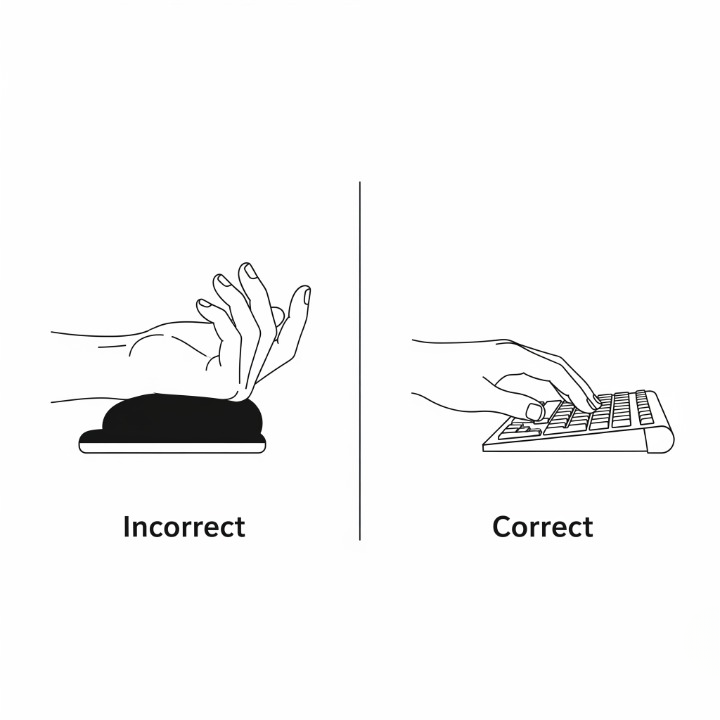
The 5-Minute Hand and Wrist Routine
Just like an athlete, a “desk athlete” needs to warm up and cool down. Performing these simple stretches a few times a day can dramatically improve blood flow, reduce stiffness, and prevent injury.
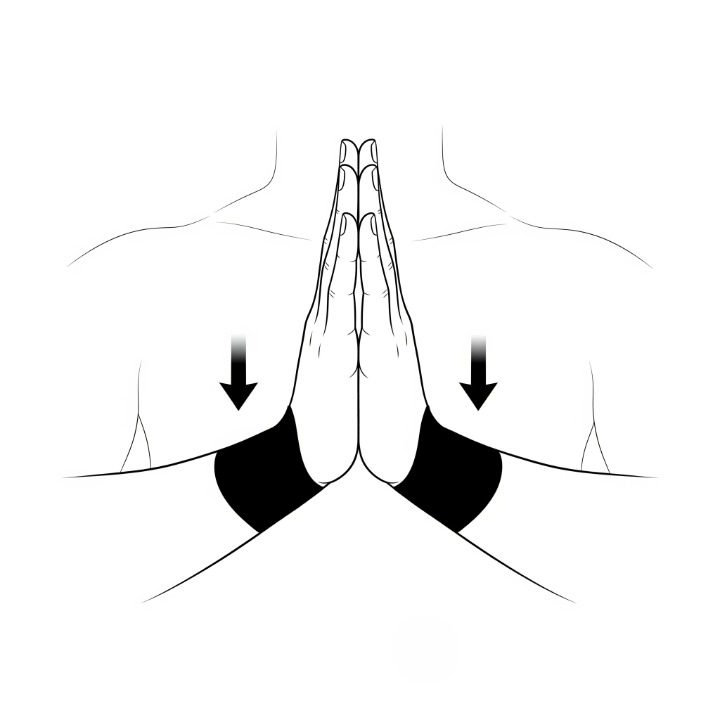
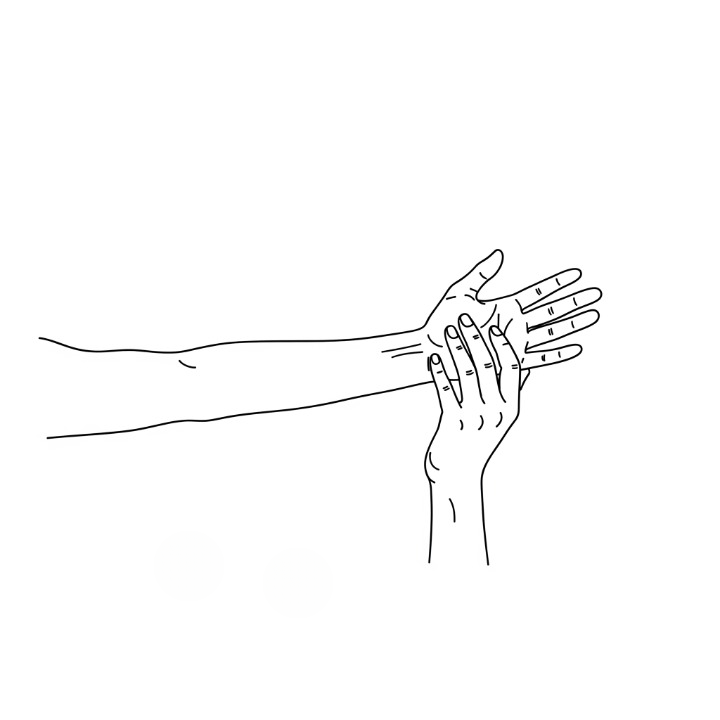
For a visual guide, many excellent videos demonstrate these hand and wrist stretches for computer users.
Beyond the Keyboard: Breaks are Non-Negotiable
No amount of stretching or perfect technique can replace the single most important habit: taking regular breaks. Your body is not meant to stay in one position for hours.
Embrace a system like the Pomodoro Technique: work in focused 25-minute intervals, followed by a 5-minute break. During this short break, get up, walk around, get some water, and look out a window. This not only rests your hands but also your eyes and your mind. Staying hydrated by drinking plenty of water throughout the day is also crucial for keeping your muscles and connective tissues healthy. You can learn more about this technique from sources like the Todoist blog.
Conclusion
Achieving true typing comfort is an active practice, not a one-time purchase. It’s a partnership between your equipment and your body. By combining a well-configured ergonomic setup with mindful, healthy typing habits, you create a sustainable system for wellness.
Start by becoming aware of your own habits. Are you anchoring your wrists? Are you hitting the keys too hard? Choose one bad habit to work on this week. Integrate the 5-minute stretching routine into your coffee breaks. These small, consistent efforts are the key to preventing repetitive strain injuries and ensuring that you can enjoy a long, comfortable, and productive relationship with your keyboard.


